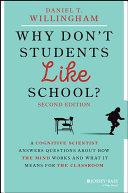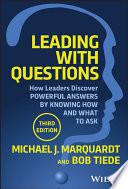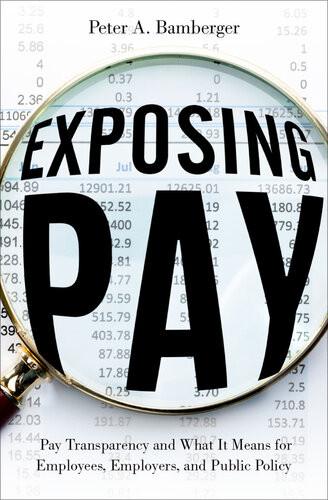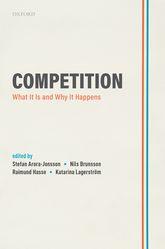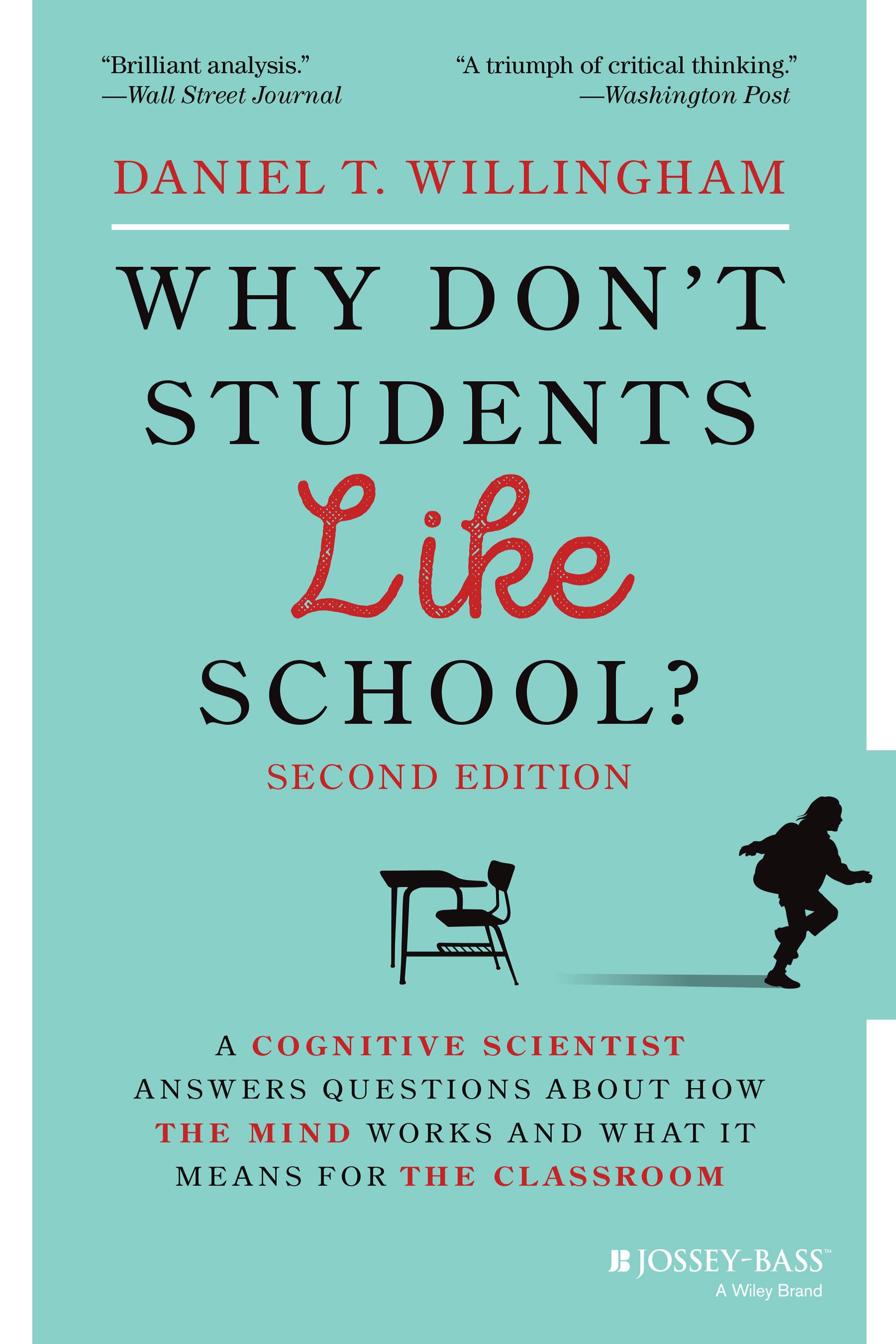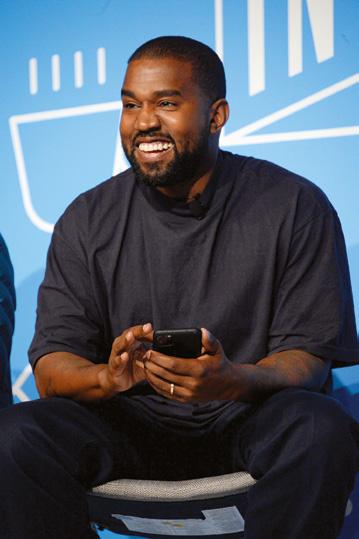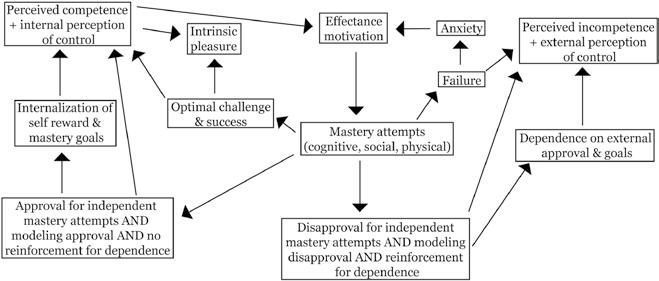Why Don't Students Like School?:
A Cognitive Scientist Answers Questions About How the Mind Works and What It Means for the Classroom 2nd Edition
Daniel T. Willingham
Visit to download the full and correct content document: https://ebookmass.com/product/why-dont-students-like-school-a-cognitive-scientist-an swers-questions-about-how-the-mind-works-and-what-it-means-for-the-classroom-2n d-edition-daniel-t-willingham/
More products digital (pdf, epub, mobi) instant download maybe you interests ...
Science Denial: Why It Happens and What to Do About It
Gale M. Sinatra & Barbara K. Hofer
https://ebookmass.com/product/science-denial-why-it-happens-andwhat-to-do-about-it-gale-m-sinatra-barbara-k-hofer/
Russia's War on Everybody: And what it means for You 1st Edition Keir Giles
https://ebookmass.com/product/russias-war-on-everybody-and-whatit-means-for-you-1st-edition-keir-giles/
Leading with Questions: How Leaders Discover Powerful Answers by Knowing How and What to Ask, 3rd Edition
Michael J. Marquardt
https://ebookmass.com/product/leading-with-questions-how-leadersdiscover-powerful-answers-by-knowing-how-and-what-to-ask-3rdedition-michael-j-marquardt/
Fantasy - How it Works Brian Attebery
https://ebookmass.com/product/fantasy-how-it-works-brianattebery/
Breached!: Why Data Security Law Fails and How to Improve it
Daniel J. Solove
https://ebookmass.com/product/breached-why-data-security-lawfails-and-how-to-improve-it-daniel-j-solove-2/
Breached!: Why Data Security Law Fails and How to Improve It
Daniel J. Solove
https://ebookmass.com/product/breached-why-data-security-lawfails-and-how-to-improve-it-daniel-j-solove/
Exposing Pay: Pay Transparency and What It Means for Employees, Employers, and Public Policy Peter
Bamberger
https://ebookmass.com/product/exposing-pay-pay-transparency-andwhat-it-means-for-employees-employers-and-public-policy-peterbamberger/
Competition: What It Is and Why It Happens Stefan Arora-Jonsson
https://ebookmass.com/product/competition-what-it-is-and-why-ithappens-stefan-arora-jonsson/
The Best Moms Don't Do it All: How Moms Got Stuck Doing Everything for Their Families and What They Can Do About It Thomas Phelan
https://ebookmass.com/product/the-best-moms-dont-do-it-all-howmoms-got-stuck-doing-everything-for-their-families-and-what-theycan-do-about-it-thomas-phelan/
Praise for Why Don’t Students Like School
“Brilliant analysis.”
“A triumph of critical thinking.”
–Wall Street Journal
Washington Post
“Accessible, entertaining prose that knits together the cognitive science of learning with illuminating examples, to reveal students’ challenges navigating school. A real gem is Willingham’s convergence on clear implications for classroom improvement.The book is a masterpiece of style and content that every teacher will find indispensable.”
—Mark McDaniel, professor, Washington University in St. Louis, co-author of Make It Stick
“In these pages, Daniel Willingham lays out key ideas that have the power to improve education, borne from the study of cognitive science and evidence of how students learn, using accessible and thought-provoking examples that educators—and, indeed, everyone with an interest in schools—can find compelling. Since its initial publication, and through today, Why Don’t Students Like School? represents a critical addition to the literature on teaching and learning. Daniel Willingham expertly examines cognition in multiple ways and then puts that knowledge to work with recommendations for practical actions that teachers can take in their classrooms to strengthen their instructional pedagogy. Amid a massive national shift to the increased use of distance learning, this second edition also focuses on what research currently tells us about the use of technology in education, and helps to provide educators with the essential questions they should ask about adopting new technologies and teaching tools. To be sure, this second edition of Daniel Willingham’s pathbreaking work is right on time.”
—John B. King Jr., 10th U.S. Secretary of Education and President and CEO of The Education Trust
“A rare pairing of intelligible theoretical principles and practical strategies, crafted with teachers in mind. Willingham’s book is one that educators can revisit and appreciate anew with every year of teaching.”
—Jasmine Lane, high school English teacher, Minnesota
“Every school teacher and home-schooling caregiver should read this book. A distinguished cognitive scientist and brilliant explainer, Daniel Willingham brings us up to date on the latest science showing how critically important factual knowledge is for a person’s competence and success. He shows us exactly how to cause youngsters to LOVE gaining it! A great contribution!”
—E.D. Hirsch Jr., author of How to Educate a Citizen, and founder of the Core Knowledge Foundation
“This second edition of Why Don’t Students Like School? comes as COVID-19 has exacerbated longstanding inequities and schooling has become more foundational to helping keep students engaged and hopeful. Willingham’s clear explanation of what it takes to learn and think well gives teachers and policymakers a strong blueprint for helping our youth not only tackle COVID’s aftermath but thrive.”
—Randi Weingarten, president, American Federation of Teachers
“Willingham’s second edition takes us on a deeper dive into the knowledge of the mind; it takes what we now know and presents it in a way that encourages educators to hone their craft. Not only will education be better, students will also benefit with the retention of long-term learning.”
—Patrice M. Bain, EdS, educator and author of Powerful Teaching
Why Don’t Students Like School?
A COGNITIVE SCIENTIST
ANSWERS QUESTIONS ABOUT HOW THE MIND WORKS AND WHAT IT MEANS FOR THE
CLASSROOM
Second Edition
Copyright © 2021 by Daniel T. Willingham. All rights reserved.
Jossey-Bass
A Wiley Imprint 111 River St, Hoboken, NJ 07030 www.josseybass.com
No part of this publication may be reproduced, stored in a retrieval system, or transmitted in any form or by any means, electronic, mechanical, photocopying, recording, scanning, or otherwise, except as permitted under Section 107 or 108 of the 1976 United States Copyright Act, without either the prior written permission of the Publisher, or authorization through payment of the appropriate per-copy fee to the Copyright Clearance Center, Inc., 222 Rosewood Drive, Danvers, MA 01923, phone +1 978 750 8400, fax +1 978 750 4470, or on the web at www.copyright.com. Requests to the Publisher for permission should be addressed to the Permissions Department, John Wiley & Sons, Inc., 111 River Street, Hoboken, NJ 07030, phone + 1 201 748 6011, fax +1 201 748 6008, or online at www.wiley.com/go/permissions.
Limit of Liability/Disclaimer of Warranty: Although the publisher and author have used their best efforts in preparing this book, they make no representations or warranties with respect to the accuracy or completeness of the contents of this book and specifically disclaim any implied warranties of merchantability or fitness for a particular purpose. No warranty may be created or extended by sales representatives or written sales materials. The advice and strategies contained herein may not be suitable for your situation. You should consult with a professional where appropriate. Neither the publisher nor author shall be liable for any loss of profit or any other commercial damages, including but not limited to special, incidental, consequential, or other damages.
Jossey-Bass books and products are available through most bookstores. To contact Jossey-Bass directly, call our Customer Care Department within the U.S. at 800-9567739, outside the U.S. at +1 317 572 3986, or fax +1 317 572 4002.
Wiley also publishes its books in a variety of electronic formats and by print-ondemand. Some material included with standard print versions of this book may not be included in e-books or in print-on-demand. If this book refers to media such as a CD or DVD that is not included in the version you purchased, you may download this material at http://booksupport.wiley.com. For more information about Wiley products, visit www.wiley.com.
Library of Congress Cataloging-in-Publication Data is Available:
ISBN 9781119715665 (paperback)
ISBN 9781119715795 (epdf )
ISBN 9781119715801 (epub)
Cover image: School Desk: © CSA-Archive/Getty Images
Student: © A-Digit/Getty Images
Cover design: Wiley
Second Edition
10 9 8 7 6 5 4 3 2 1
For Trisha
Acknowledgments to the First Edition
Acknowledgments to the Second Edition
The Author
Introduction
Chapter 1 Why Don’t Students Like School?
Chapter 2
How Can I Teach Students the Skills They Need When Standardized Tests Require Only Facts?
Chapter 3
Why Do Students Remember Everything That’s on Television and Forget Everything I Say?
Chapter 4
Why Is It So Hard for Students to Understand Abstract Ideas?
Chapter 5 Is Drilling Worth It?
Chapter 6
What’s the Secret to Getting Students to Think Like Real Scientists, Mathematicians, and Historians?
Chapter 7
How Should I Adjust My Teaching for Different Types of Learners?
Chapter 8
How Can I Help Slow Learners?
Chapter 9
How Can I Know Whether New Technology Will Improve Student Learning?
Chapter 10
What About My Mind?
Why Don’t Students Like School?
Question: Most of the teachers I know entered the profession because they loved school as children. They want to help their students feel the same excitement and passion for learning that they felt.
They are understandably dejected when they find that some of their pupils don’t like school much, and that they, the teachers, have trouble inspiring them. Why is it difficult to make school enjoyable for students?
Answer: Contrary to popular belief, the brain is not designed for thinking. It’s designed to save you from having to think, because the brain is actually not very good at thinking. Thinking is slow and unreliable. Nevertheless, people enjoy mental work if it is successful. People like to solve problems but not to work on unsolvable problems. If schoolwork is always just a bit too difficult (or too easy) for a student, it should be no surprise that she doesn’t like school much. The cognitive principle that guides this chapter is:
People are naturally curious, but we are not naturally good thinkers; unless the cognitive conditions are right, we will avoid thinking.
The implication of this principle is that teachers should reconsider how they encourage their students to think, in order to maximize the likelihood that students will get the pleasurable rush that comes from successful thought.
The Mind Is Not Designed for Thinking
What is the essence of being human? What sets us apart from other species? Many people would answer that it is our ability to reason –birds fly, fish swim, and humans think. (By thinking I mean solving problems, reasoning, reading something complex, or doing any mental work that requires some effort.) Shakespeare extolled our cognitive ability in Hamlet: “What a piece of work is man! How noble in reason!” Some three hundred years later Henry Ford more cynically observed, “Thinking is the hardest work there is, which is the probable reason why so few people engage in it”* (Figure 1.1).
Both Shakespeare and Ford had a point. Humans are good at certain types of reasoning, particularly in comparison to other animals, but we exercise those abilities infrequently. A cognitive scientist would add another observation: Humans don’t think very often because our brains are designed not for thought but for the avoidance of thought.
Kanye West is one the most successful and respected songwriters and performers, as well as a highly successful businessman. But he has said, “I actually don’t like thinking. I think people think I like to think a lot. And I don’t. I do not like to think at all.”1 Source: © Getty Images/ Brad Barket.
Your brain has many capabilities, and thinking is not the one it does best. Your brain also supports the ability to see and to move, for example, and these functions operate much more efficiently and reliably than your ability to think. It’s no accident that most of your brain’s real estate is devoted to these activities. The extra brain power is needed because seeing is actually more difficult than playing chess or solving calculus problems.
FIGURE 1.1:
You can appreciate the power of your visual system by comparing human abilities to those of computers. When it comes to math, science, and other traditional “thinking” tasks, machines beat people, no contest. Calculators that can perform simple calculations faster and more accurately than any human have been cheaply available for 40 years. With $50 you can buy chess software that can defeat more than 99% of the world’s population. But we’re still struggling to get a computer to drive a truck as well as a human. That’s because computers can’t see, especially not in complex, ever-changing environments like the one you face every time you drive. And in fact, the self-driving vehicles in development typically use radar, lasers, and other sensors to supplement information from visible light.
Robots are similarly limited in how they move. Humans are excellent at configuring our bodies for tasks, even if the configuration is unusual, such as when you twist your torso and contort your arm in an effort to dust behind books on a shelf. Robots are not very good at figuring out novel ways to move and are most useful in repetitive work such as spray painting automotive parts or moving pallets or boxes at an Amazon fulfillment center – jobs in which the objects to be grasped and the locations to move them are predictable. Tasks that you take for granted – for example, walking on a rocky shore where the footing is uncertain – are much more difficult than playing top-level chess (Figure 1.2).


FIGURE 1.2: Hollywood robots (left), like humans, can move in complex environments, but that’s true only in the movies. Most real-life robots (right) move in predictable environments. Our ability to see and move is a remarkable cognitive feat. Source: Hollywood robots © Getty Images/Koichi Kamoshida; factory robots © Getty Images/Christopher Furlong.
Compared to your ability to see and move, thinking is slow, effortful, and uncertain. To get a feel for why I say this, try solving this problem:
In an empty room are a candle, some matches, and a box of tacks. The goal is to have the lit candle about 5 ft off the ground. You’ve tried melting some of the wax on the bottom of the candle and sticking it to the wall, but that wasn’t effective. How can you get the lit candle 5 ft off the ground without having to hold it there?2
Twenty minutes is the usual maximum time allowed, and few people are able to solve it by then, although once you hear the answer you will realize it’s not especially tricky. You dump the tacks out of the box, tack the box to the wall, and use it as a platform for the candle. This problem illustrates three properties of thinking. First, thinking is slow. Your visual system instantly takes in a complex scene. When you enter a friend’s backyard you don’t think to yourself, “Hmmm, there’s some green stuff. Probably grass, but it could be some other ground cover – and what’s that rough brown object sticking up there? A fence, perhaps?”You take in the whole scene –lawn, fence, flowerbeds, gazebo – at a glance.Your thinking system does not instantly calculate the answer to a problem the way your visual system immediately takes in a visual scene. Second, thinking is effortful; you don’t have to try to see, but thinking takes concentration. You can perform other tasks while you are seeing, but you can’t think about something else while you are working on a problem. Finally, thinking is uncertain.Your visual system seldom makes mistakes, and when it does you usually think you see something similar to what is actually out there – you’re close, if not exactly right. Your thinking system might not even get you close. In fact, your thinking system may not produce an answer at all, which is what happens to most people when they try to solve the candle problem.
If we’re all so bad at thinking, how does anyone get through the day? How do we find our way to work or spot a bargain at the grocery store? How does a teacher make the hundreds of decisions necessary to get through her day? The answer is that when we can get away with it, we don’t think. Instead we rely on memory. Most of the problems we face are ones we’ve solved before, so we just do what we’ve done in the past. For example, suppose that next week a friend gives you the candle problem. You would immediately say, “Oh, right. I’ve heard this one.You tack the box to the wall.” Just as your visual system takes in a scene and, without any effort on your part, tells you what is in the environment, so too your memory system immediately and effortlessly recognizes that you’ve heard the problem before and provides the answer. You may think you have a terrible memory, and it’s true that your memory system is not as reliable as your visual or movement system – sometimes you forget, sometimes you think you remember when you don’t – but your memory system is much more reliable than your thinking system, and it provides answers quickly and with little effort.
We normally think of memory as storing personal events (memories of my wedding) and facts (the seat of the Coptic Orthodox Church is in Egypt). Our memory also stores strategies to guide what we should do: where to turn when driving home, how to handle a minor dispute when monitoring recess, what to do when a pot on the stove starts to boil over (Figure 1.3). For the vast majority of decisions we make,
FIGURE 1.3: Your memory system operates so quickly and effortlessly that you seldom notice it working. For example, your memory has stored away information about what things look like (Gandhi’s face) and how to manipulate objects (turn the left faucet for hot water, the right for cold) and strategies for dealing with problems you’ve encountered before (such as a pot boiling over).
Source: Gandhi © Getty Images/Dinodia Photos; faucet © Shutterstock/ RVillalon; pot © Shutterstock/Andrey_Popov.
we don’t stop to consider what we might do, reason about it, anticipate possible consequences, and so on. For example, when I decide to make spaghetti for dinner, I don’t scour the Internet for recipes, weighing each for taste, nutritional value, ease of preparation, cost of ingredients, visual appeal, and so on – I just make spaghetti sauce the way I usually do. As two psychologists put it, “Most of the time what we do is what we do most of the time.”3 When you feel as though you are “on autopilot,” even if you’re doing something rather complex, such as driving home from school, it’s because you are using memory to guide your behavior. Using memory doesn’t require much of your attention, so you are free to daydream, even as you’re stopping at red lights, passing cars, watching for pedestrians, and so on.
Of course you could make each decision with care and thought. When someone encourages you to “think outside the box” that’s usually what he means – don’t go on autopilot, don’t do what you (or others) have always done. Consider what life would be like if you always strove to think outside the box. Suppose you approached every task afresh and tried to see all of its possibilities, even daily tasks like chopping an onion, entering your workplace, or sending a text message. The novelty might be fun for a while, but life would soon be exhausting (Figure 1.4).
You may have experienced something similar when traveling, especially if you’ve traveled where you don’t speak the local language. Everything is unfamiliar and even trivial actions demand lots of thought. For example, buying a soft drink from a vendor requires figuring out the flavors from the exotic packaging, trying to communicate with the vendor, working through which coin or bill to use, and so on. That’s
FIGURE 1.4: “Thinking outside the box” for a mundane task like selecting bread at the supermarket would probably not be worth the mental effort. Source: © Shutterstock/B Brown.
one reason that traveling is so tiring: all of the trivial actions that at home could be made on autopilot require your full attention.
So far I’ve described two ways in which your brain is set up to save you from having to think. First, some of the most important functions (for example, vision and movement) don’t require thought: you don’t have to reason about what you see; you just immediately know what’s out in the world. Second, you are biased to use memory to guide your actions rather than to think. But your brain doesn’t leave it there; it is capable of changing in order to save you from having to think. If you repeat the same thought-demanding task again and again, it will eventually become automatic; your brain will change so that you can complete the task without thinking about it. I discuss this process in more detail in Chapter 5, but a familiar example here will illustrate what I mean.You can probably recall that learning to drive a car was mentally very demanding. I remember focusing on how hard to depress the accelerator, when to apply the brake as I approached a red light, how far to turn the steering wheel to execute a turn, when to check my mirrors, and so forth. I didn’t even listen to music while I drove, for fear of being distracted. With practice, however, the process of driving became automatic, and now I don’t need to think about those small-scale bits of driving any more than I need to think about how to walk. I can drive while simultaneously chatting with friends, gesturing with one hand, and eating French fries – an impressive cognitive feat, if not very attractive to watch.† Thus a task that initially takes a great deal of thought becomes, with practice, a task that requires little thought.
The implications for education sound rather grim. If people are bad at thinking and try to avoid it, what does that say about students’ attitudes toward school? Fortunately, the story doesn’t end with people stubbornly refusing to think. Despite the fact that we’re not that good at it, we actually like to think. We are naturally curious, and we look for opportunities to engage in certain types of thought. But because thinking is so hard, the conditions have to be right for this curiosity to thrive, or we quit thinking rather readily. The next section explains when we like to think and when we don’t.
People Are Naturally Curious, But Curiosity Is Fragile
Even though the brain is not set up for very efficient thinking, people actually enjoy mental activity, at least in some circumstances. We have hobbies like solving crossword puzzles or scrutinizing maps. We watch information-packed documentaries. We pursue careers –such as teaching – that offer greater mental challenge than competing careers, even if the pay is lower. Not only are we willing to think, we intentionally seek out situations that demand thought.
Solving problems brings pleasure. When I say “problem solving” in this book, I mean any cognitive work that succeeds; it might be understanding a difficult passage of prose, planning a garden, or sizing up an investment opportunity. There is a sense of satisfaction, of fulfillment, in successful thinking. Neuroscientists have found overlap between the brain areas that are important in learning and those that are important in perception of pleasure, and many neuroscientists suspect that the two systems are related. Rats in a maze learn better when rewarded with cheese. When you solve a problem or satisfy your curiosity, your brain may reward itself with a small burst of a naturally occurring chemical in the brain’s pleasure system. Even though the neurochemistry is not completely understood, it seems undeniable that people take pleasure in solving problems.
It’s notable too that the pleasure is in the solving of the problem. Working on a problem with no sense that you’re making progress is not pleasurable. In fact, it’s frustrating. Then too, there’s not great pleasure in simply knowing the answer. I told you the solution to the candle problem; did you get any fun out of it? Think how much more fun it would have been if you had solved it yourself – in fact, the problem would have seemed more clever, just as a joke that you get is funnier than a joke that has to be explained. Even if someone doesn’t tell you the answer to a problem, once you’ve had too many hints you lose the sense that you’ve solved the problem, and getting the answer doesn’t bring the same mental snap of satisfaction.
Mental work appeals to us because it offers the opportunity for that pleasant feeling when it succeeds. But not all types of thinking are equally attractive. People choose to work crossword puzzles but not
algebra problems. A biography of Taylor Swift is more likely to sell well than a biography of Keats. What characterizes the mental activity that people enjoy (Figure 1.5)?
The answer that most people would give may seem obvious: “I think crossword puzzles are fun and Taytay is cool, but math is boring and so is Keats.” In other words, it’s the content that matters.We’re curious about some stuff but not about other stuff. Certainly that’s the way people describe our own interests – “I’m a stamp collector” or “I’m into medieval symphonic music.” But I don’t think content drives interest. We’ve all attended a lecture or watched a video (perhaps only after being prevailed upon to do so) about a subject we thought we weren’t interested in, only to find ourselves fascinated. And it’s easy to find yourself bored even when you usually like the topic. I’ll never forget my eagerness for the day my middle school teacher was to talk about sex. As a teenage boy in a staid 1970s suburban culture, I fizzed with anticipation of any talk about sex, anytime, anywhere. But when the big day came, my friends and I were bored senseless. It’s not that the teacher talked about flowers and pollination – he really did talk about human sexuality – but somehow it was still dull. I actually wish I could remember how he did it; boring a bunch of hormonal teenagers with a sex talk is quite a feat.

Why are many people fascinated by problems like the one shown on the left, but very few people willingly work on problems like the one on the right? Source: Sudoku © Shutterstock/Heather Wallace; geometry © Anne Carlyle Lindsay.
FIGURE 1.5:
I once made this point to a group of teachers when talking about motivation and cognition. About five minutes into the talk I presented a slide depicting the model of motivation shown in Figure 1.6. I didn’t prepare the audience for the slide in any way; I just displayed it and started describing it. After about 15 seconds I stopped and said to the audience, “Anyone who is still listening to me, please raise your hand.” One person did. The other 59 were also attending voluntarily; it was a topic in which they were presumably interested, and the talk had only just started – but in 15 seconds their minds were somewhere else. To be clear, I’m not blaming them; the content of a problem – whether it’s about sex or human motivation –may be sufficient to prompt your interest, but it won’t maintain it. So, if content is not enough to keep your attention, when does curiosity have staying power? The answer seems to lie in our judgment of how much we are likely to learn. Curiosity is maintained when we think we’ll learn a lot.
That judgment – will I learn? – is closely related to our perception of the difficulty of the problem. If it’s that little burst of pleasure from solving a problem that we look forward to, then there’s no point in working on a problem that is too easy – there’ll be no pleasure when it’s solved because it didn’t feel like much of a problem in the first place. Then too, when you size up a problem as very difficult, you are judging that you’re unlikely to solve it, and are therefore unlikely to get the satisfaction that comes with the solution. A crossword puzzle
FIGURE 1.6: A difficult-to-understand figure that will bore most people unless it is adequately introduced. Source: © Anne Carlyle Lindsay.
